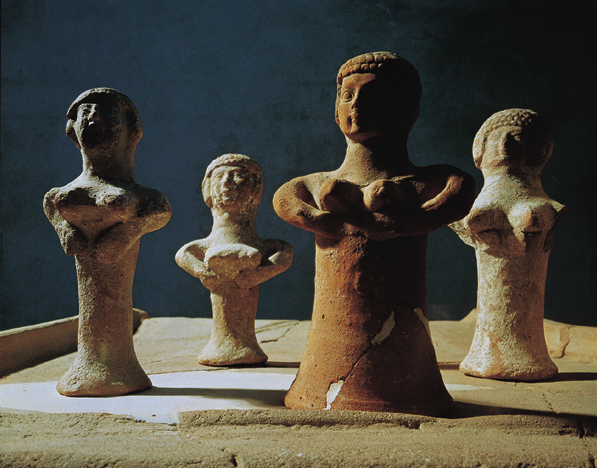Image Details

Israel Museum/Erich Lessing
Queen of heaven? Called pillar figures because of their column-shaped torsos, these pottery figurines from Ein Shemesh, east of Jerusalem, and Lachish, in Judea, may represent the mother goddess Astarte, identified by some scholars as the Canaanite counterpart to the Assyrian deity Ishtar. The prophet Jeremiah may describe the worship of this goddess, called the Queen of Heaven in Assyrian texts, when he declares: “In the towns of Judah and the streets of Jerusalem…the children gather sticks, the fathers kindle the fire and the mothers knead dough, to make sacrificial cakes (kawwanim) for the Queen of Heaven” (Jeremiah 7:17–18).
The Bible also mentions that the Judahite king Manasseh “bowed down to all the host of heaven…and he built altars for all the host of heaven in the two courts of the House of the Lord” (2 Kings 21:3–5). Manasseh’s altars must have been fairly small if several of them were set up in the Temple courts, Haran notes, concluding that the small horned altars excavated in Israel once may have held the honey-sweetened cakes and other grain-offerings presented to the Queen of Heaven. Significantly, most of the altars date to the seventh century B.C.E., a period of Assyrian hegemony in Judah. The only similar horned altar discovered outside Israel was found in Nineveh—in Assyria.
